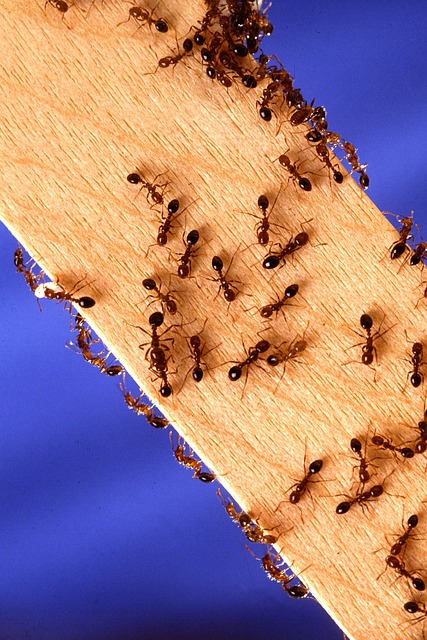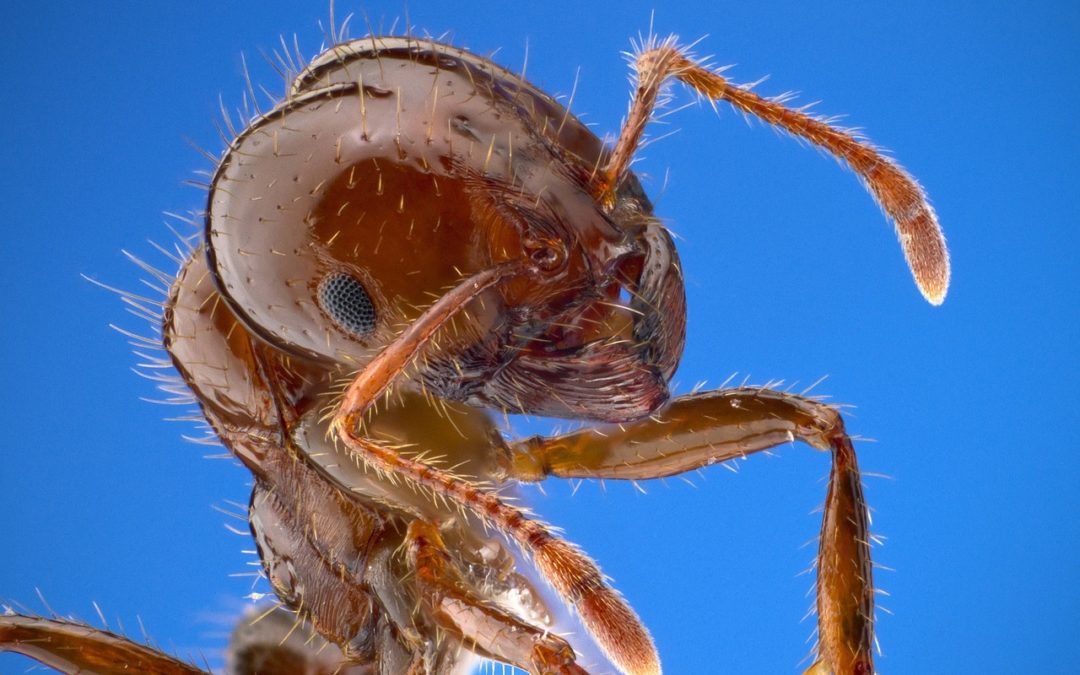The desire for lawn maintenance can come from a sense of pride for your landscape or a need to surround yourself with living things. Regardless of why you keep your yard looking tidy and clean, there are benefits for having the lawn maintained that go beyond how you want your property to look. Mowing the lawn gets rid of the long unkempt grass that attracts not only weeds but bugs as well. Short grass does not provide shade for pests like mosquitos, moths, and beetles. These species do not thrive in the sun and are most active during dawn or dusk. A lack of available shade can prevent them from swarming in your yard. Fertilizing the lawn can make the grass a vibrant green, but too much fertilizer can be toxic and cause your grass to die. It can also runoff into your sewer system, causing health problems and possible HOA violations.
If you see disturbed soil in your yard with mounds around 18 inches tall with no visible entrances, then you are most likely dealing with fire ants. The article will focus on teaching you how to recognize the warning signs and how to treat fire ants in your yard.
Basic Facts about Fire Ants

A single fire ant queen can produce 1,600 eggs per day.
There are all sorts of ants in Dallas. Carpenter ants, leafcutter ants, and pavement ants are just a few species common to Dallas, but fire ants are a species that sticks out from the rest. They are notorious for their sting. There are native fire ants as well as imported fire ants in Dallas. The native ants are not as aggressive as their imported counterparts, but they do sting and may also cause a pustule at the site of the bite. Red imported fire ants are considered to be exotic and invasive species in various parts of Texas. They have even displaced the other species of fire ants native to the state.
The red imported fire ants’ colonies scale between 300-500,000 workers and scavenge a perimeter as far as 100 yards. They either have a single-queen colony or a multiple-queen one. Single-queen colonies are territorial and only forage within their area while the latter colony is freer ranged in their scavenging, moving from one mound to another. Areas infested with single-queen colonies have around 40-150 mounds per acre (typically no more than 7 million ants per acre). In regions with multiple-queen colonies, there may be over 200 mounds and 40 million ants per acre.
The queen lives between 2 to 6 years while her workers typically live around 180 days (or 6 months). The total time for an egg to become adult averages 30 days. The fire ant workers diverse from one another in various ways. They come in different colors, ranging from shades of red to black and vary in size as well, up to ¼ an inch. Regardless of the size, they all have the same body proportions with the head width never exceeding the abdomen width. The one thing they have in common is their aggressive nature that they push many insects away from their local habitat.
The homes of red imported fire ants are mounds of loose soil with no clear entrances. The fire ants come and go to the mound through underground tunnels, and they prefer to build mounds in open sunny areas such as pastures, parks, meadows, and lawns. Locate mounds around trees, rotting logs, and stumps. You can also find colonies in or under buildings. The colony generally lives in numerous mounds near each other.
If the mounds are unearthed, they will swarm and viciously sting whoever disturbed the mound. Different from other ants, which simply bite and then spray acid on the wound, fire ants bite to get a hold of its prey and then sting like a bee from the abdomen. The fire ants inject a toxic alkaloid venom called solenopsin. This venom causes a painful sting for humans and leaves a sensation similar to what someone feels when burned by fire, rightfully giving them the name of fire ants.
They mostly feed on young plants and seed but are known to attack small animals and even kill their victims. They are attracted to food that includes protein, greases, and sweets. They also eat and forage small insects and dead animals. When fire ants invade a building, residential or commercial space, they seem to be charmed by electrical currents. Their presence can create damage to air-conditioning units, telephone wires, and even electrical junction boxes.
Fire ant activity starts from spring and goes into the late fall months. Fire ants are most active when the temperatures range between 65 °F to 90 °F. The workers are generally active outside the nest, scavenging for food during the cooler morning and evening hours. They are also renowned for their ability to survive extreme conditions, but they do not hibernate and can endure cold conditions. Another extreme condition is when the population has declined, the queen only needs a few workers to start a new colony. They would then develop a new mound not far from their previous location in just a few hours.
See also: 10 Insect-Repelling Plants that Drive Away Nasty Pests
Fire Ant Control
There are a few methods to use when dealing with fire ants. If you desire to handle fire ants yourself, try following these steps recommended by a pest control company in Dallas.
Fire ant bait
We advise you first to treat your lawn with the broadcasting method. Broadcast a fire ant bait over the entire yard. You would do this a few times a year during the spring and summer. Treating your lawn will help significantly reduce your fire ant infestation. Apply the fire ant baits on sunny days and when you see higher activity around the mound. Baits will entice the worker ants to forage for it. Check for the weather to avoid putting out the bait on extremely hot or rainy days.
Broadcast fire ant killer
After applying the fire ant bait, apply a broadcast fire ant killer. This will prevent surviving queens and workers from forming new mounds or invisible mounds you believe you missed.
Using insecticides
This method is most effective when dealing with smaller areas or individual mounds. Your main goal when using a liquid insecticide is to kill the queen. Drench the mound with the insecticide using a rod to form vertical tunnels that ensure the liquid reaches the queen.
Still have questions about pest control? Visit our Pest Control page for more information.

